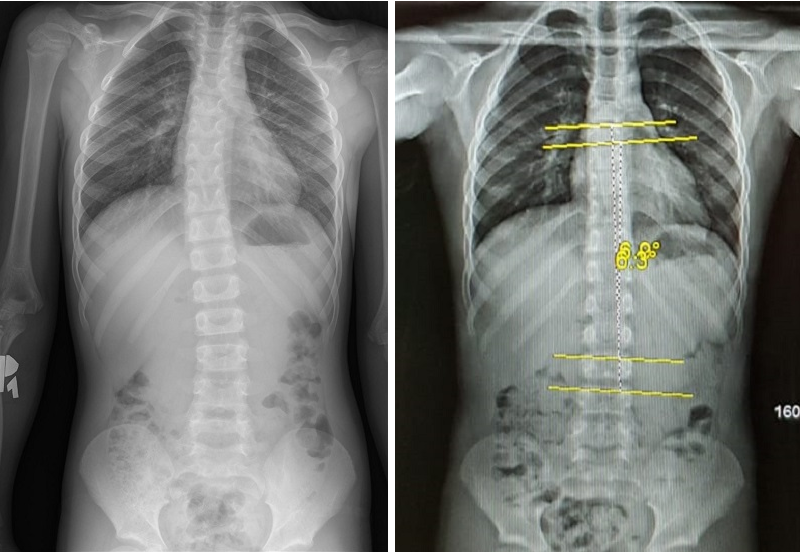
09 June 2020
We first met Hannah in 2017 when she had been diagnosed with juvenile idiopathic scoliosis which typically affects children between the age of four and ten. At this age there is every likelihood that the condition will get worse. X-rays revealed that she had a Cobb angle of 18 degrees. Bracing is not considered necessary with a curve of that size, but Schroth physiotherapy is recommended as it has shown that a home program of between 3 and 6 months can reduce these small (under 25 degrees) curves in young people.
It is important to emphasise that LOC’s physiotherapy programmes for Scoliosis are nothing like generic physiotherapy. They are scoliosis curve-pattern specific and are tailored to each individual’s postural compensations. Symmetrical exercises do not tend to be effective, but Schroth physiotherapy is 3-dimensional. The success of any exercise programme is down to the commitment of the patient and Hannah has been a star in that respect, because she followed the home exercise programme to the letter.
In March, Hannah came to see us for a review; she proudly presented her most recent x-rays which showed the Cobb angle reduced to a barely significant 6 degrees. This is a testament to her commitment and to the efficacy of the Schroth.
She now just must keep fit and active with activity advice and ensure good postural habits. She is monitored by her parents and free 3 monthly physio reviews.
The operation used to treat severe scoliosis curves is typically spinal fusion surgery; a major procedure that involves moving muscles and realigning the skeleton into place. The curved, deformed vertebrae are fused together into a single bone, putting metal screws and rods into the spine to help straighten it. Surgery typically lasts between 4 and 8 hours depending on the severity of the curve. Bone graft is then taken from other parts of the body and used to cover the implants.
Following the operation, it is necessary to spend around a week in intensive care before returning home and the first few days are often uncomfortable. Most adolescents can expect to return to school from 2-4 weeks following surgery, but pain medication may be required up to 6 weeks following. A full recovery from the procedure can take up to a year, as it can take that long for the spine to heal fully.
Spinal fusion surgery causes the fused portion of the back to become permanently stiff, as a result, returning to sports that require large amounts of flexibility (ballet, yoga, gymnastics, dance) or contact (rugby, football, karate, hockey) may take longer.
Risks of spinal fusion surgery are like that of any other major procedure and include infection, blood clots and anaesthesia complications. The added risks include permanent nerve damage to the spine and paralysis.